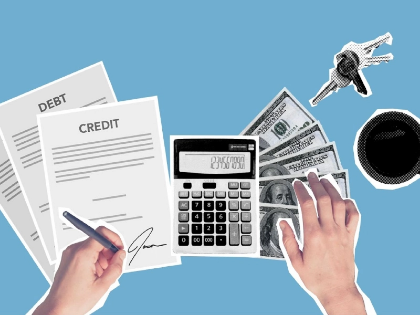In contrast to private student loans, federal student loans are determined by financial need, don't require a cosigner or credit check, and have flexible payback terms. The steps involved in applying for and accepting federal student loans are explained in this article.
Completing the FAFSA

The FAFSA application is used to assess a student's eligibility for loans, work-study money, and government grants. Grants are given out for free, but loans have varying repayment terms and need to be paid back after graduation. Students utilize an FSA ID (or their parent, if they are a dependent) to complete the FAFSA online, where they apply for financial aid by providing the name of their school.
Even though completing the FAFSA can seem overwhelming, you can make the process go more smoothly by asking your high school guidance counselor or the financial aid office of the college you intend to attend for assistance. Schools frequently organize programs, like "College Goal Sundays," to assist children in completing the application. Personal data and information about family income, including investment and retirement account details, are requested on the FAFSA. The IRS Data Retrieval Tool, which imports your tax data with a few clicks (if you're eligible to utilize it), is another tool used by the FAFSA. Your school will give you an aid award package outlining all the cash available to you as soon as you submit the form.
Finishing the admissions counseling process

For certain first-time borrowers, counseling upon entering student loans is mandatory. It gives borrowers crucial information on the conditions of their direct loans, their options and obligations for repaying them, and the repercussions of default. Additionally, a school has the academic right to provide more comprehensive financial literacy seminars for credit or without credit; nevertheless, enrollment in such a course cannot be a requirement to be eligible for a federal student loan.
Online entrance counseling is available, and it takes 20 to 30 minutes to do. Before any money is deposited into their account, first-time Federal Direct Loan recipients must fulfill this criterion.
The various loan options accessible to BU students will also be covered in this course, including previous loan options that have been combined into a single Master Promissory Note (MPN). It will include advice on how to manage your student loan load and emphasize responsible borrowing practices. It will also cover the fallout from default and delinquency, including wage garnishments and withholdings from tax refunds.
A Master Promissory Note (MPN) being signed

The federal government will send you an offer of financial aid after your FAFSA is submitted. You will be required to sign a Master Promissory Note (MPN) if you decide to accept the loans that are part of your offer. The MPN is a contract that guarantees the repayment of your loan(s) plus any interest and fees that have accumulated.
The Federal Student Aid website offers the MPN for completion online. Your FSA ID, contact details, and two references are required. Although the references are not cosigners, they can assist the Department of Education in finding you in the event that you relocate or update your contact details.
The government will notify your school of your approval after you sign your MPN. After that, you'll need to finish entry counseling at your institution. During the counseling, you will learn about the loan application process and how it will be repaid. It will also outline your alternatives for filing for bankruptcy in order to reduce or discharge your debt.
Paying with money

Once your loan has been disbursed, visit the National Student Loan Data System to stay current on your terms of payments and balance. Your loan servicers have to be in constant contact with you as well. Speak with your service providers about the several alternatives available to you, such as income-driven repayment plans, to help manage your payments.
Recall that interest accrues when enrolled in classes, during your grace period, and during forbearance or deferment. It's crucial to make a small payment every month, or whenever possible, to avoid this, as this interest capitalizes when your payback period starts. Monthly payments can be made online, via mail, or by remitting a check or money order along with the appropriate remittance slip and 16-digit Loan Group Number. Remember that borrowers with federal loans may be eligible for deferral and forbearance, which allow them to postpone loan repayment. Nevertheless, in order to prevent default and the associated repercussions, these choices must be reserved for last resort.
Recommended Reading: Which amount of renter's insurance is needed?
























Sharper than expected.
Gentle reminder we need.
Refactor my approach? Probably.
Raises standards quietly.
Quiet champion of maintainability.